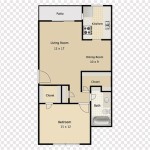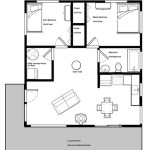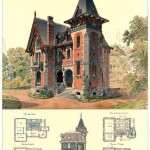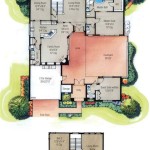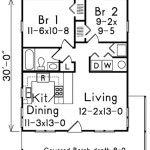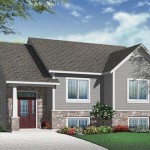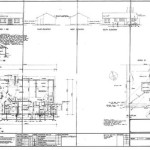Multi-Family Homes: Understanding Diverse Floor Plan Options
Multi-family homes represent a significant portion of the housing market, offering diverse living options for a wide range of demographics. These properties, designed to house multiple independent households within a single building or complex, offer a compelling alternative to detached single-family dwellings. Understanding the variety of floor plans available is crucial for both developers planning new construction and potential residents seeking suitable accommodation.
The term "multi-family home" encompasses a broad spectrum of building types, ranging from duplexes and townhouses to large apartment complexes and condominiums. The specific floor plan configurations within these buildings are highly variable and depend on factors such as the target demographic, the site's physical constraints, local zoning regulations, and overall market demand. This article will explore several common multi-family home floor plan types and the considerations involved in their design and selection.
Exploring Common Multi-Family Floor Plan Types
The architectural designs of multi-family homes are as diverse as the populations they serve. While numerous variations exist, certain fundamental floor plan types appear frequently due to their efficiency, adaptability, and market appeal. The following sections will detail some of the most prevalent layouts.
Apartment-Style Units: Apartment-style units are the most common type of multi-family housing. Typically found in larger complexes, these units are characterized by individual living spaces that share common areas such as hallways, lobbies, and outdoor amenities. Floor plans within apartment complexes can range from compact studios to spacious three-bedroom layouts or even larger. The defining characteristic is their location within a larger structured managed complex.
Studio apartments offer a single, open living space encompassing the living area, sleeping area, and kitchen. A separate bathroom is provided. Studios are typically the smallest and most affordable option, catering to single individuals or couples who prioritize affordability and minimal maintenance. The layout is often linear or L-shaped to maximize usable space.
One-bedroom apartments provide a separate bedroom in addition to a living area, kitchen, and bathroom. These units appeal to single individuals or couples seeking more space and privacy than a studio offers. Common layouts include a central living area with the bedroom located off to one side, providing a distinct separation between living and sleeping zones.
Two-bedroom apartments are designed for small families, roommates, or couples who desire a guest room or home office. These units typically feature two bedrooms of varying sizes, a shared bathroom (or sometimes two), a living area, and a kitchen. Layouts can vary considerably, with some designs prioritizing open-concept living areas and others emphasizing bedroom privacy.
Three-bedroom apartments cater to larger families or groups of roommates needing additional space. These units offer three bedrooms, typically with at least one or two bathrooms, a living area, and a kitchen. Many three-bedroom apartment floor plans include a master suite with a private bathroom for increased privacy and comfort. Specific placement of bedrooms, whether adjoined or separated, may be a factor.
Townhouse-Style Units: Townhouses are multi-story units that share one or more walls with adjacent units. Each townhouse typically has its own private entrance and often includes a small yard or patio area. Townhouses offer a greater sense of privacy and ownership compared to apartment-style units and are often preferred by families seeking more space and a single-family home feel.
Townhouse floor plans typically feature living areas and kitchens on the ground floor, with bedrooms located on the upper floors. This vertical separation of living and sleeping areas enhances privacy and reduces noise transmission. Many townhouses also include basements or attached garages for additional storage or parking.
Common townhouse layouts include variations that place the primary bedroom suite on a separate floor from additional bedrooms. This may be a design consideration for families where parents would like to have a more isolated space away from children's bedrooms. Also, the incorporation of a flex space to be used as an office or a recreation room is a growing trend.
Duplexes and Triplexes: Duplexes and triplexes consist of two or three separate living units within a single building. These units typically share a common wall but have separate entrances and utilities. Duplexes and triplexes are often owner-occupied, with the owner residing in one unit and renting out the others. This can provide a source of income for the owner while offering affordable housing options for renters.
Duplex and triplex floor plans can vary significantly depending on the building's design and size. In horizontal duplexes, the units are located side-by-side on the same floor. In vertical duplexes, the units are stacked on top of each other, similar to a townhouse. Triplexes can combine both horizontal and vertical arrangements.
The floor plans for each unit in a duplex or triplex typically mirror each other, although variations are possible. Common features include separate entrances, individual kitchens and bathrooms, and private outdoor spaces. The integration of shared spaces like laundry might be a feature of this housing style.
Factors Influencing Multi-Family Floor Plan Design
The design of multi-family floor plans is influenced by a complex interplay of factors, including market demand, zoning regulations, building codes, and budget constraints. Developers must carefully consider these factors to create floor plans that are both functional and appealing to potential residents.
Market Demand: Understanding the target demographic and their housing preferences is crucial for successful multi-family development. Developers must conduct market research to determine the demand for different unit types and sizes. For example, if the target market is young professionals, smaller units with modern amenities may be preferred. If the target market is families, larger units with ample storage space and access to schools may be more desirable.
The overall design of the floor plan should also reflect the lifestyle of the target demographic. For example, open-concept living areas may be popular with younger residents who enjoy entertaining, while older residents may prefer more traditional layouts with separate living and dining rooms. Also, the inclusion of smart technology and energy-efficient appliances can appeal to environmentally conscious residents.
Zoning Regulations and Building Codes: Local zoning regulations dictate the types of housing allowed in specific areas, as well as the minimum unit sizes, parking requirements, and density restrictions. Building codes establish standards for safety, accessibility, and energy efficiency. Developers must comply with all applicable zoning regulations and building codes to obtain the necessary permits for construction.
Zoning regulations may also specify requirements for open space, landscaping, and setbacks. These requirements can impact the overall layout of the multi-family development and the design of individual floor plans. Building codes dictate minimum room sizes, ceiling heights, and window sizes. These codes also address fire safety, structural integrity, and accessibility for individuals with disabilities.
Construction Costs and Budget Constraints: Construction costs represent a significant portion of the overall development budget. Developers must carefully consider the cost of materials, labor, and site preparation when designing floor plans. Simpler floor plans with fewer walls and less complicated plumbing and electrical systems are typically less expensive to build.
Developers may also need to make trade-offs between unit size and amenities to stay within budget. For example, reducing the size of the master suite or eliminating a balcony could save money on construction costs. The selection of materials and finishes can also impact the budget. Choosing less expensive materials, such as vinyl flooring instead of hardwood, can reduce overall costs.
Emerging Trends in Multi-Family Floor Plan Design
The multi-family housing market is constantly evolving, with new trends emerging to meet the changing needs and preferences of residents. Some of the key trends include a focus on sustainability, technology integration, and flexible living spaces.
Sustainability: Environmentally conscious design is becoming increasingly important to both developers and residents. Sustainable floor plans incorporate features such as energy-efficient appliances, low-flow plumbing fixtures, and renewable energy sources. Green building certifications, such as LEED (Leadership in Energy and Environmental Design), are becoming more common in multi-family developments.
Sustainable design also includes the use of recycled materials and locally sourced products. Passive solar design, which maximizes natural light and ventilation, can reduce energy consumption. Water conservation measures, such as rainwater harvesting and greywater recycling, can also be incorporated into the design.
Technology Integration: Smart home technology is becoming increasingly prevalent in multi-family homes. Smart thermostats, lighting controls, and security systems can enhance comfort, convenience, and energy efficiency. High-speed internet access is now considered an essential amenity. Some developers are also incorporating features such as smart locks and package delivery systems to improve resident experience.
Technology integration also includes the use of digital platforms for property management and resident communication. Online rent payment systems, maintenance request portals, and community forums can streamline operations and improve communication between residents and property managers.
Flexible Living Spaces: Multifunctional spaces are increasingly desired, allowing residents to adapt their homes to changing needs. Open-concept layouts that combine living, dining, and kitchen areas are popular. Flexible spaces that can be used as a home office, guest room, or exercise area are also in demand. Movable walls, modular furniture, and built-in storage solutions can help residents maximize the use of their space.
The integration of outdoor living spaces, such as balconies, patios, and rooftop terraces, is also becoming more common. These spaces provide residents with opportunities to connect with nature and enjoy the outdoors.
In conclusion, the design of multi-family floor plans is a dynamic process, influenced by a variety of factors and constantly evolving to meet the changing needs and preferences of residents. Understanding the different floor plan types, the factors influencing their design, and the emerging trends in the market is crucial for both developers and potential residents.

Multi Family House Plan Not A Fan Of The Dated Exterior But I Like Concept Plans Duplex

6 Unit Modern Multi Family Home Plan 21603dr Architectural Designs House Plans

Plan 69111am Hillside Multi Family Home In 2024 House Plans Homes

Duplex House Plans Multi Family Living At Its Best Dfd Blog
House Plan Of The Week Multigenerational Duplex Builder

Fordyce Crest Multi Family Home House Plans Duplex Floor And More

Multi Family Plan 6865

Best Multi Unit House Plans Modern Family And Duplex

Multi Family Plan 73483 Ranch Style With 3433 Sq Ft 5 Bed 3 B

Multi Family Plan 64952 Victorian Style With 7624 Sq Ft 16 Bed

